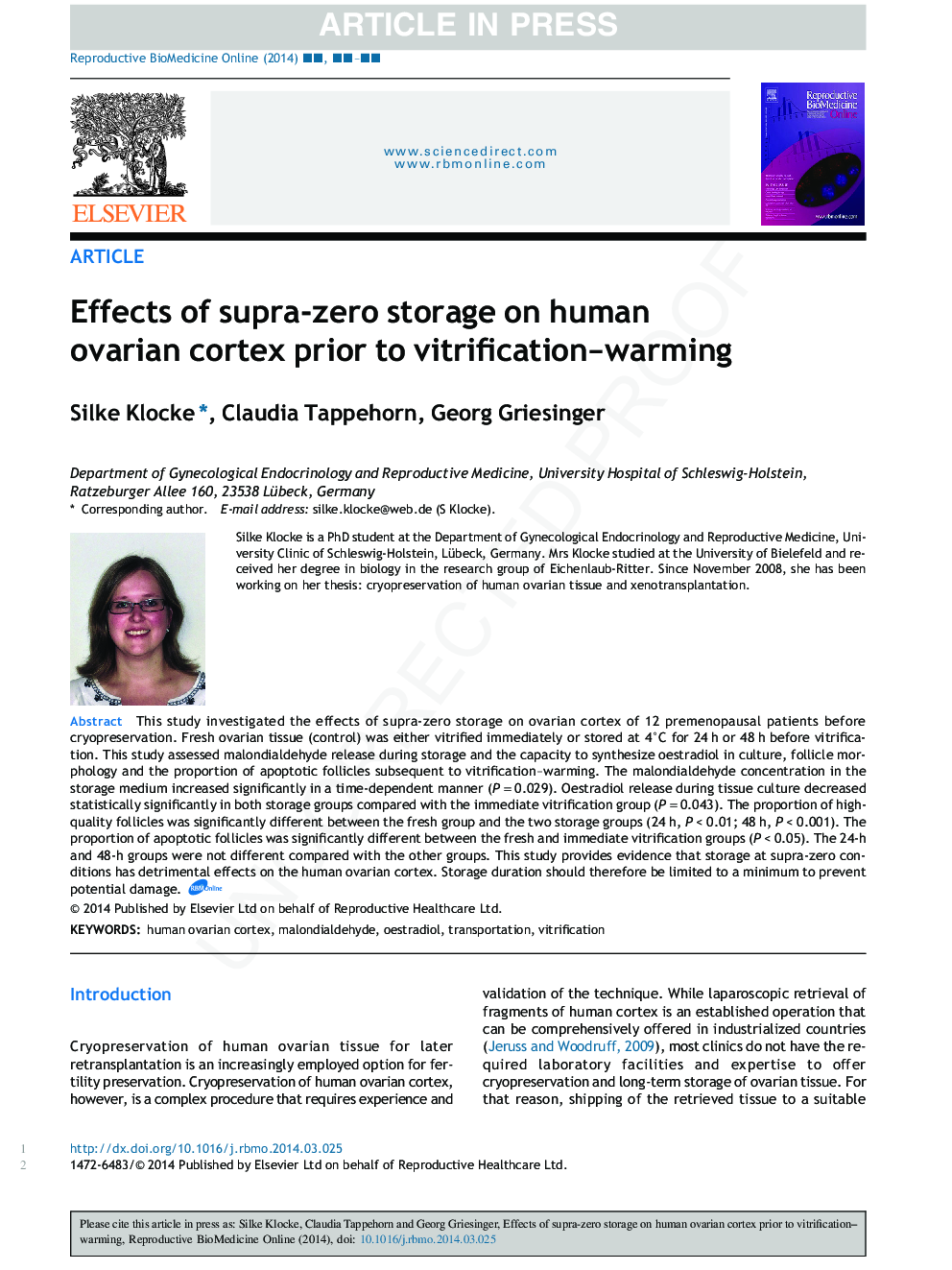| Article ID | Journal | Published Year | Pages | File Type |
|---|---|---|---|---|
| 6188915 | Reproductive BioMedicine Online | 2014 | 8 Pages |
Abstract
This study investigated the effects of supra-zero storage on ovarian cortex of 12 premenopausal patients before cryopreservation. Fresh ovarian tissue (control) was either vitrified immediately or stored at 4°C for 24âh or 48âh before vitrification. This study assessed malondialdehyde release during storage and the capacity to synthesize oestradiol in culture, follicle morphology and the proportion of apoptotic follicles subsequent to vitrification-warming. The malondialdehyde concentration in the storage medium increased significantly in a time-dependent manner (P = 0.029). Oestradiol release during tissue culture decreased statistically significantly in both storage groups compared with the immediate vitrification group (P = 0.043). The proportion of high-quality follicles was significantly different between the fresh group and the two storage groups (24 h, P < 0.01; 48âh, P < 0.001). The proportion of apoptotic follicles was significantly different between the fresh and immediate vitrification groups (P < 0.05). The 24-h and 48-h groups were not different compared with the other groups. This study provides evidence that storage at supra-zero conditions has detrimental effects on the human ovarian cortex. Storage duration should therefore be limited to a minimum to prevent potential damage.
Related Topics
Health Sciences
Medicine and Dentistry
Obstetrics, Gynecology and Women's Health
Authors
Silke Klocke, Claudia Tappehorn, Georg Griesinger,
